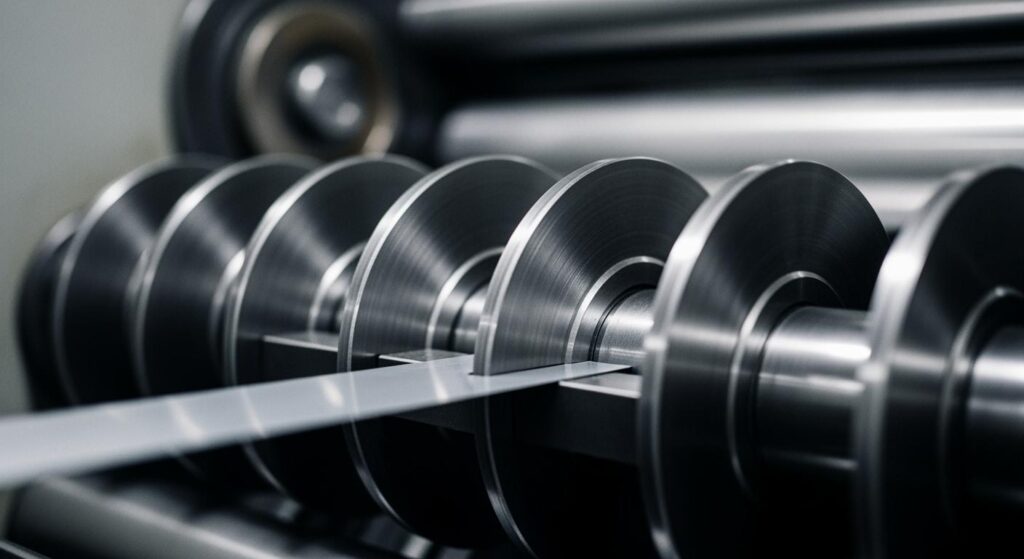
When you pick a rotary slitter blade for metal, you get better accuracy and strength for your work. Nanjing Metal Industrial has rotary slitter blade for metal choices that keep their sharp edge and cut well. You need a rotary slitter blade for metal that fits your metal type, how fast you work, and what size you need. Steel service centers use rotary slitter blade for metal to save time and make cleaner cuts. You get rotary slitter blade for metal made for special jobs and checked for steady results.
- Pick the best rotary slitter blade for metal to help you work faster.
- Handle tough metal jobs with blades made to work well.
Key Takeaways
- Pick the right rotary slitter blade to cut faster and better.
- Choose blades that match the metal type and thickness for best results.
- Harder blades are best for strong metals, but softer blades are good for easier jobs.
- Blades that keep their edge need fewer changes and make better cuts over time.
- Blades with a smooth finish slide easier and cut better.
- Clean and oil blades often to help them last longer.
- Use high-speed steel or carbide blades for quick, nonstop work.
- Follow the maker’s rules to put in and care for blades the right way.
Rotary Slitter Blade for Metal: Key Features
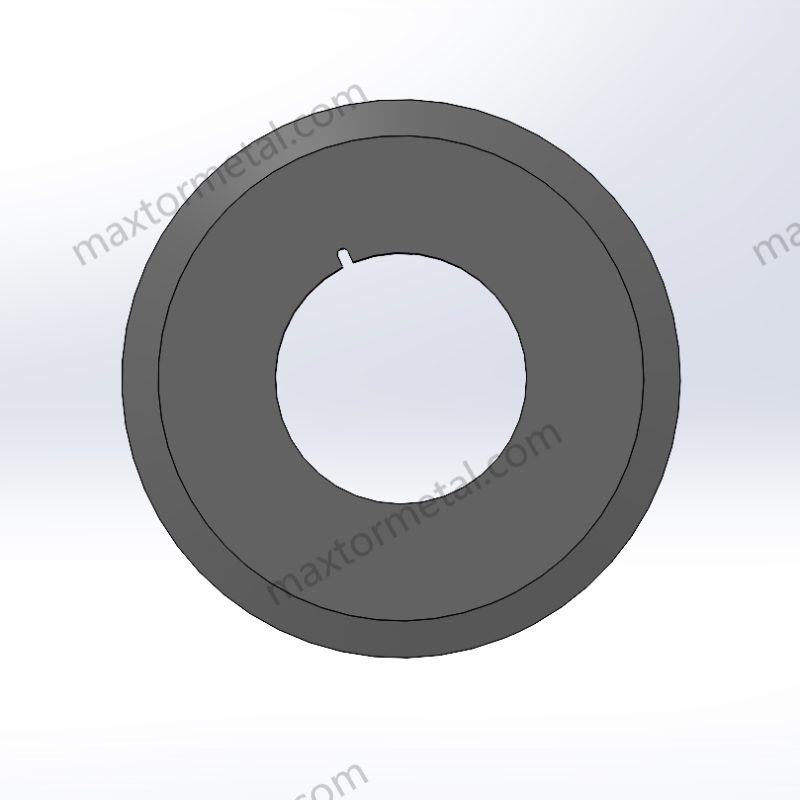
When you pick a rotary slitter blade for metal, you should check some important things. These things help you get smooth cuts, make the blade last longer, and stop your work from slowing down. Let’s see what is most important.
Material and Hardness
The material and hardness of the blade decide how well it cuts and how long it works. You need a blade that matches the metal you cut and how fast you work. If you choose the right material, you can save money on repairs and keep your machines working well.
Tip: Harder blades are better for tough metals. Softer blades are good for easy jobs.
Here is a table that shows common blade materials and their usual hardness:
| Material Type | Hardness Rating (Rockwell Scale) |
|---|---|
| Soft Steel | RC45 |
| Hard Steel | RC60 |
| High-Speed Steel | RC62-67 |
| Tungsten Carbide | RC75-80 |
High-Carbon Steel
High-carbon steel blades are hard and keep their edge for simple jobs. These blades are best for mild steel, aluminum, and other soft metals. They are a good choice if you want to save money. If you have a small business or want to spend less, high-carbon steel is a smart choice. But you might need to change these blades more often if you cut harder metals.
Tool Steel
Tool steel blades are tough and hard at the same time. They do not chip or bend easily, even when used a lot. These blades are good for both slow and fast cutting. They last longer than high-carbon steel blades and are great if you need strong and flexible blades.
High-Speed Steel
High-speed steel blades are very hard and can handle heat well. You can use them for fast jobs and for cutting hard metals. These blades stay sharp for a long time, so you do not need to sharpen them often. Many big factories use high-speed steel because it works well and lasts long.
Tungsten Carbide
Tungsten carbide blades are super hard and do not wear out fast. They last up to three times longer than high-carbon steel blades in tough jobs. If you need to cut stainless steel, titanium, or other hard metals, tungsten carbide is the best choice. These blades are great for big, fast jobs. They cost more at first, but you save money because you do not need to replace them as much.
- Tungsten carbide blades: Hardness about 1,500 Vickers
- High-carbon steel blades: Hardness 700–900 Vickers
Edge Retention
Edge retention means how long your blade stays sharp. Good edge retention means your blade lasts longer and you do not need to fix it as much. When your blade stays sharp, you get better cuts and spend less money.
Companies like Nanjing Metal Industrial use special ways to make blades keep their edge. They use forging, alloy sintering, careful cutting, and special coatings. For example, coatings like titanium or chromium stop blades from sticking and rusting, so they last longer.
Note: If your blade keeps its edge, you get better cuts and do not need to change blades as often.
Precision and Tolerance
Precision and tight tolerances help you get clean and exact cuts. If your blade meets strict rules, you waste less metal and get fewer rough edges. In fast, automatic jobs, even a small mistake can waste metal or break machines.
Here is a table that shows normal tolerances for rotary slitter blades:
| Blade Type | Thickness Tolerance (mm) | Length Tolerance (mm) | Edge Tolerance (mm) |
|---|---|---|---|
| Standard Industrial | ±0.05 | ±0.10 | ±0.02 |
| Precision Cutting | ±0.02 | ±0.05 | ±0.01 |
| Medical/Aerospace | ±0.01 | ±0.03 | ±0.005 |
Nanjing Metal Industrial uses careful cutting and strict checks to make sure every blade meets these rules. This helps you get the best results when you cut metal.
Surface Finish
The surface finish of your blade helps it cut metal smoothly. A smooth finish lowers friction, heat, and stops metal from sticking or getting scratched. Good finishing also makes the blade last longer and gives you better cuts. Some blades get special coatings to stop rust and work better.
You can ask for special surface finishes to fit your needs. This helps you get the best results for your own work.
Remember, picking the right features in your rotary slitter blade for metal helps you get better results, longer blade life, and cleaner cuts every time.
Surface Finish
When you pick a rotary slitter blade for metal, you should look at the surface finish. The finish on the blade’s edge and body matters a lot for cutting. If the blade is smooth, it slides easier on metal. Less sliding trouble means less heat when you cut. Less heat helps the blade last longer and keeps cuts neat. If you use a blade with a fine finish, like Ra0.2 to Ra0.4, you get smoother cuts and better metal quality.
A good surface finish also stops metal from sticking to the blade. It helps keep your work line moving without problems. You do not get burrs or rough edges on your metal. Many companies give blades special surface treatments. These treatments protect blades from rust and wearing out. You do not need to fix blades as much.
Here is a table that shows common surface coatings and what they do for rotary slitter blades for metal:
| Coating Type | Benefits |
|---|---|
| Physical Vapor Deposition | Makes blades stronger against wear and rust; stops blades from getting scratched or sticky. Common materials: Boron Carbide, titanium carbide, titanium nitride. |
| Chemical Vapor Deposition | Helps blades last longer and work better; gives a tough coating. Common material: Titanium carbide. |
| Titanium Nitride (TiN) | Helps blades last up to 40% longer when cutting fast. |
| Diamond-Like Carbon (DLC) | Makes blades harder and keeps them cool when cutting. |
These coatings help your rotary slitter blade for metal work better:
- Coatings lower friction and make blades tougher.
- Titanium-coated blades last 35% longer in fast jobs than blades without coating.
- Diamond-Like Carbon coatings make blades harder and protect them from heat.
Tip: If you want your rotary slitter blade for metal to last longer and cut better, ask for a blade with a special surface finish or coating. This easy choice helps your work and saves money.
A good surface finish is not just for looks. It helps your blade work better, last longer, and give you great cuts every time.
Best Slitting Blades: Types and Applications
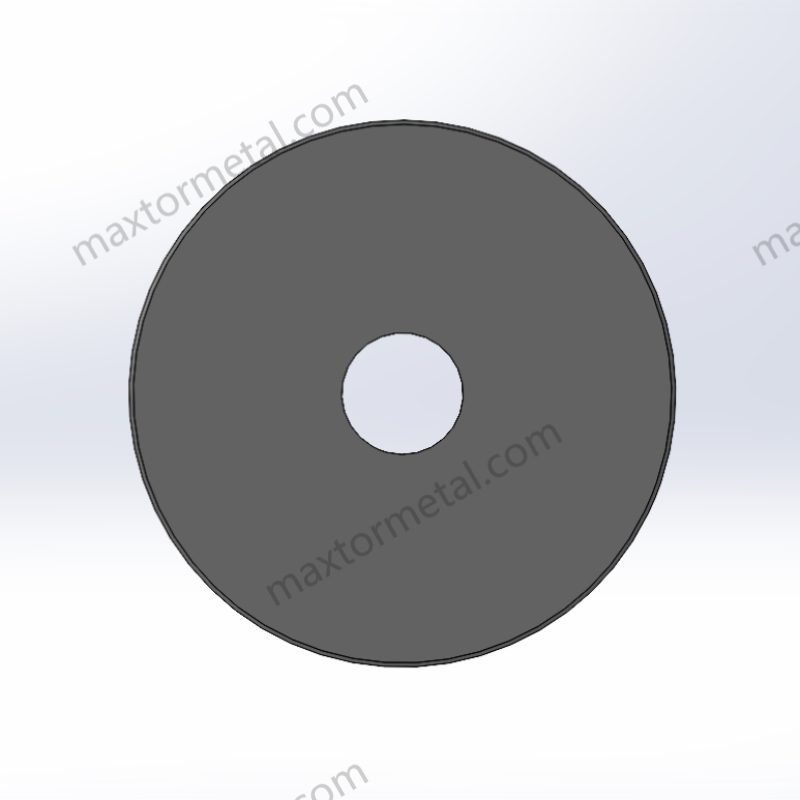
D2 Tool Steel Blades
Key Characteristics
D2 tool steel blades have a lot of chromium in them. This makes them strong and helps them last a long time. These blades stay sharp for many uses. You can use them in both hand and machine slitting. Many people pick D2 tool steel blades for circular and shear slitting.
Advantages and Limitations
There are many good things about D2 tool steel blades:
- They do not wear out fast, so you change them less.
- They keep their edge, so your cuts look neat.
- You can use them on many materials.
But D2 tool steel blades are not the best for very hard metals. You should pick the right blade for your job to get the best results.
D2 tool steel blades give you good value and work well for most jobs.
Suitable Metals and Production Speeds
You can use D2 tool steel blades in many places:
- Packaging
- Plastics work
- Printing
- Cutting films for circuit boards
- Trimming labels without hurting the paper
- Cutting paper rolls and films
D2 tool steel blades work best at medium or high speeds. They cut many metals, but not the hardest ones.
Carbide-Tipped Blades
Key Characteristics
Carbide-tipped blades have a steel body and a carbide edge. This makes them strong and very hard. You use these blades to cut tough metals or when machines run fast. Carbide-tipped blades are common in metal plants.
Advantages and Limitations
Here is a table that shows the main good and bad points of carbide-tipped blades:
| Advantages | Limitations |
|---|---|
| Very hard and do not wear out fast | Can break if hit hard |
| Last a long time and stay sharp in tough jobs | Cost more than other blades |
These blades last a long time and stay sharp. But you must be careful because they can break if dropped or hit.
Suitable Metals and Production Speeds
You should use carbide-tipped blades for:
- Cutting hard things like steel, copper, and metal mixes
- Jobs where you need the blade to last a long time
Carbide-tipped blades work best at high speeds. They are great for cutting stainless steel and other hard metals. You can use them for tough jobs in both circular and shear slitting.
High-Speed Steel Blades
Key Characteristics
High-speed steel blades are tough and can handle heat. You can use them in fast, nonstop work. These blades stay sharp even after long use. High-speed steel is a top pick for circular, shear, and razor slitting.
Advantages and Limitations
High-speed steel blades have many good points:
- They are tough and last longer.
- They stay sharp, so you change them less.
- They work well in hot, fast jobs.
Here is a table that compares high-speed steel blades and carbide blades:
| Feature | HSS Blades | Carbide Blades |
|---|---|---|
| Durability | Tough and do not wear out fast | Harder and last longer |
| Sharpness | Stays sharp for a long time | Stays sharp even longer |
| Heat Resistance | Works well in heat | Handles high heat too |
| Ideal Applications | Medium to high-speed jobs | Fast and heavy-duty jobs |
High-speed steel blades may not last as long as carbide-tipped blades in the hardest jobs, but they are a good deal for the price.
Suitable Metals and Production Speeds
You can use high-speed steel blades for:
- Medium to fast cutting of steel, aluminum, and other metals
- Jobs where you want the blade to last and stay sharp
- Work where you want less time spent changing blades
High-speed steel blades are good for nonstop work. You can use them in many types of slitting blades for lots of metal jobs.
Tip: Pick the right blade for your metal and speed. This helps you get neat cuts, longer blade life, and better results.
Micro-Grain Tungsten Carbide Blades
Key Characteristics
Micro-grain tungsten carbide blades are great for tough jobs. These blades have tiny tungsten carbide bits inside. This makes them much harder and stronger than most blades. They stay sharp for a long time. They do not chip or break easily, even with hard or rough materials. Many factories use these blades for fast and busy work.
Here is a table that shows what makes micro-grain tungsten carbide blades special and where you use them most:
| Unique Properties | High-Volume Production Scenarios |
|---|---|
| Durability: Lasts longer than high-speed steel | Continuous production: Ideal for factories running all day |
| Efficiency: Reduces downtime and maintenance | Cutting hard or abrasive materials: Handles tough jobs well |
| Cost-effectiveness: Lower long-term costs | Applications requiring minimal downtime: Keeps machines running without interruptions |
| Special finishes and edge treatments | Industries: Metalworking, Woodworking, Paper Processing, Plastics |
Advantages and Limitations
Micro-grain tungsten carbide blades have many good points. They last longer than high-speed steel or tool steel blades. You do not need to change them as often, so machines keep working. The cuts are cleaner and have fewer rough spots. This helps you save money and make better products.
- Micro-grain tungsten carbide blades do not wear out fast.
- They stay sharp, even when used for a long time.
- You can use them for both circular slitter blades and shear slitting blades.
But you must be careful with these blades. They are very hard, but they can break if dropped. They cost more at first, but you save money later because you do not replace them as much.
Tip: If you want less downtime and better cuts, micro-grain tungsten carbide blades are a smart choice for your slitting line.
Suitable Metals and Production Speeds
Micro-grain tungsten carbide blades work on many metals. They cut stainless steel, titanium, copper, and other hard metals. They also work well on rough materials like laminates or coated metals. You can use them for both circular slitter blades and shear slitting blades.
- Use these blades for fast, nonstop work.
- They are best for factories that run all day and need little stopping.
- You get great results in metalworking, plastics, and paper processing.
Circular Slitter Blades for Metal
Circular slitter blades help you cut metal coils or sheets quickly and neatly. These blades spin and slice through metal with accuracy. There are different types for different jobs. The three main types are solid disc blades, inserted blade knives, and shear cut knives.
Solid Disc Blades
Solid disc blades are made from one piece of strong steel or carbide. You use them for straight and long cuts. These blades fit many machines and work for thin or thick metals. They last a long time and work well.
- Solid disc blades give smooth edges and less roughness.
- You can use them for both circular slitter blades and shear slitting blades.
- They are simple to put in and take care of.
Inserted Blade Knives
Inserted blade knives have a holder and a part you can change. You only swap the edge when it gets dull, not the whole blade. This saves time and money. You use these knives when you need to change blades often or need special edge shapes.
- Inserted blade knives work well for razor slitting blades and crush cut blades.
- You can switch edges for different materials, so they are flexible.
- These knives are used in packaging, plastics, and metal slitting.
Shear Cut Knives
Shear cut knives use two blades that move close together, like scissors. They make very clean cuts with little roughness. These knives are best for jobs that need high accuracy. You use them for thin metals, coated sheets, and soft materials.
- Shear cut knives fit many circular slitter blades setups.
- You get less dust and smoother edges.
- These knives are used in electronics, cars, and appliance making.
Note: Picking the right circular slitter blades helps you get better cuts and waste less metal. You also keep your machines working longer with less fixing.
You can use circular slitter blades for many jobs. They work in metal service centers, coil cutting, and even in razor slitting blades for films and foils. You get the best results when you match the blade type to your material and speed.
Leading Brands of Rotary Slitter Blades
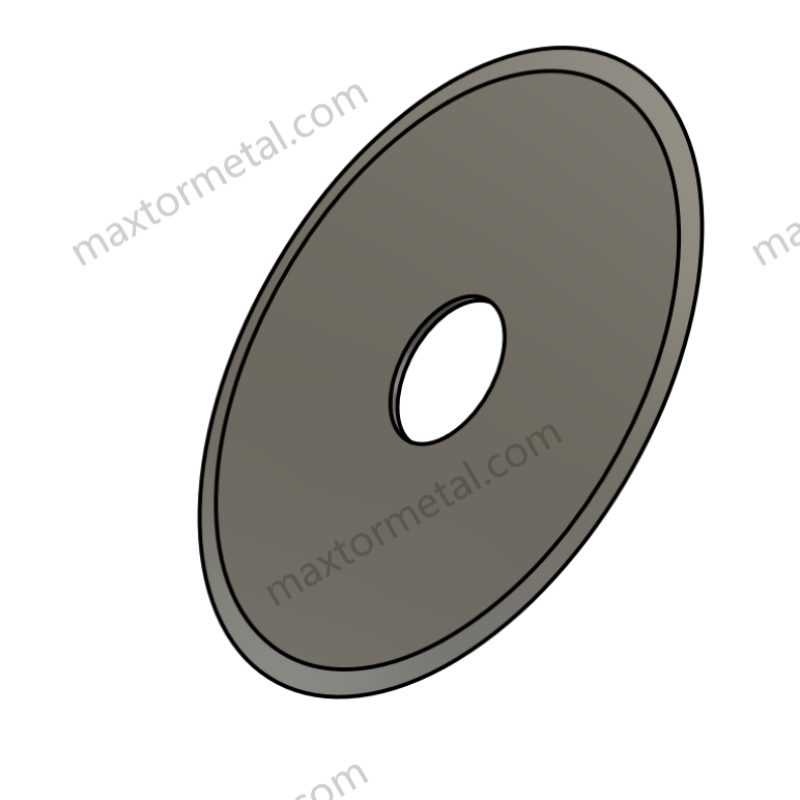
When you want the best rotary slitter blades, you should pick a brand that gives you good quality and help. Many companies make these blades, but some are better because they have lots of choices, can make special blades, and check their products carefully.
Nanjing Metal Industrial
Nanjing Metal Industrial has many rotary slitter blades for different jobs. They help people in metalworking, packaging, and plastics. You can find blades for many machines and materials, so you get what you need.
Here is a table that shows why Nanjing Metal Industrial is a great pick:
| Feature | Description |
|---|---|
| Product Range | Has many kinds of slitter blades for lots of uses. |
| Customization Options | Makes blades just for you. You can ask for special shapes or sizes. |
| Quality Assurance | Checks every blade many times before sending it to you. |
You can ask for blades with special shapes, edges, or coatings. The company looks at each blade closely, so you get good results and fewer problems. If you need help, their team will help you from your first order to after you buy.
Tip: If you want blades made just for you, pick a brand that lets you choose what you need and checks their blades well.
Other Global Brands
There are other brands that are leaders in rotary slitter blades. These companies work hard to make new and strong blades. You can find their blades in factories all over the world.
- Bahco
- Klein Tools Inc.
- Mitsubishi Materials Corporation
- Tungaloy Corporation
- Walter AG
- Guhring Inc.
- Seco Tools
- ISCAR Ltd.
- Kennametal Inc.
- DMT GmbH & Co. KG
- Micro 100 Tool Corporation
These brands use new materials and smart machines. They use robots to make blades that last longer and cut better. Many brands help you quickly if you have problems, so your work does not stop.
Konetool is another brand that makes tungsten carbide slitter knives. You can use their blades for jobs that need sharp and strong blades in packaging, metalworking, and plastics. Their blades help you make clean cuts and stop your machines from slowing down.
Note: The rotary slitter blade market is always changing. Companies now use better materials and smarter machines to help you work faster and save money.
When you pick a top brand, you get more than just a blade. You get help, new ideas, and you know your work will go well.
Choosing the Right Rotary Slitter Blade for Metal

Assessing Metal Type and Thickness
Identifying Metal Types
You need to know what metal you want to cut. Every metal is different in how hard or tough it is. Some metals are soft and easy to cut. Others are hard and need stronger blades. Mild steel is soft and works with basic blades. Stainless steel is harder and needs tough blades. Aluminum is soft but can stick to blades. Copper is soft but can make blades dull fast. Titanium is very hard and needs special blades. If you match the blade to the metal, you get cleaner cuts and your blade lasts longer.
- Mild steel is soft and easy to cut.
- Stainless steel is hard and needs strong blades.
- Aluminum is soft but can stick to blades.
- Copper is soft but can dull blades fast.
- Titanium is very hard and needs special blades.
Tip: Always check your metal type before picking a rotary slitter blade. This helps you avoid rough edges or burrs.
Measuring Material Thickness
You should measure how thick your metal sheets or coils are. Use a caliper or micrometer to get the right number. Thick metals need strong, thick blades. Thin metals work best with sharp, fine blades. If you use the wrong blade, your cuts might look bad or your machine could get damaged.
- Thin metals (under 1 mm) need sharp, fine blades.
- Medium metals (1–3 mm) use standard blades.
- Thick metals (over 3 mm) need heavy-duty blades.
Note: Measure in more than one spot. Metal thickness can change across the sheet or coil.
Matching Blade Material to Metal Properties
If you pick the right blade material for your metal, you cut better and your blade lasts longer. Carbide or high-speed steel blades with heat-resistant coatings are good for hard metals. The right blade gives you better cuts and lasts longer.
| Metric | Value |
|---|---|
| Blade life | Extended from 2 weeks to 6 weeks |
| Slicing precision | Variance < 0.5 mm |
| Blade type | Thick, rigid blades with steep bevel angles (30–40°) |
| Material | Carbide or HSS with heat-resistant coatings |
| Design | Spine-reinforced to prevent flexing |
You can also match the blade shape to your metal and machine. This helps you cut faster and waste less metal. A sharp, well-made blade helps you finish jobs quickly and keeps your line moving.
- Pick blade shapes that fit your metal and machine.
- Use good blades for clean cuts and less waste.
- Keep blades sharp for faster work and better results.
A sharp and well-designed blade is important for fast cutting. Blades made for your metal give you quicker cuts, less wear, and better quality.
Considering Coated or Treated Metals
Some metals have coatings or treatments, like galvanized steel or painted aluminum. These coatings can make cutting harder. You need blades that do not stick and can handle wear. Special coatings like titanium nitride or diamond-like carbon help stop buildup and make blades last longer.
- Coated metals may need blades with special edge treatments.
- Treated metals can dull blades faster, so use harder blades.
- Always check if your metal has a coating before picking a blade.
Tip: If you cut coated or treated metals, ask for blades with anti-stick or wear-resistant coatings. This keeps your cuts clean and your blades lasting longer.
Matching Blade to Production Speed
Determining Required Cutting Speed
You should know how fast your slitting line goes. Cutting speed and how much you cut matter when picking a blade. Fast lines need blades that can handle more heat and stress. If you use a blade not made for high speeds, it can wear out fast or cut badly.
Selecting Blade Grade for High-Speed Operations
For fast jobs, you need blades with the right grade and design. The table below shows what to think about:
| Factor | Description |
|---|---|
| Type of material being cut | The specific material affects blade selection |
| Desired width of the slit | Width impacts the blade design and performance |
| Speed and accuracy of cutting | Higher speeds require precise blade specifications |
Pick high-speed steel or carbide blades for fast work. These blades handle heat and stay sharp longer. You also need blades with tight tolerances and smooth finishes.
Balancing Edge Retention and Heat Resistance
When machines run fast, blades get hot. You need blades that stay sharp and do not get damaged by heat. High-speed steel and carbide blades with special coatings work best. These blades last longer and give better cuts, even when running fast.
- Look for blades with heat-resistant coatings.
- Pick materials that keep their edge under stress.
- Change blades before they get too dull to avoid bad cuts.
Adjusting for Continuous vs. Intermittent Production
If your line runs all day, you need blades that last a long time. For short jobs, you can use regular blades. Continuous work puts more stress on blades, so use the toughest materials and best coatings. For short runs, you can use blades that do not need as much wear resistance.
- Continuous production: Use carbide or high-speed steel blades with coatings.
- Intermittent production: Standard tool steel or high-carbon steel may work.
Note: Always match your blade to your production style for the best results.
Equipment Compatibility
Checking Blade Dimensions and Mounting
You must check the size and shape of your blades. Make sure the blade fits your slitting machine. Measure the diameter, thickness, and mounting hole. If the blade does not fit, you can damage your machine or get poor cuts.
- Measure blade diameter and thickness.
- Check the mounting hole size and shape.
- Compare with your machine’s requirements.
Ensuring Fit with Slitting Machine Specifications
Your blade must match your machine’s specs. Each machine has limits for blade size, speed, and mounting. Using the wrong blade can cause problems like burrs or slitting powder chips. Always check your machine manual before you buy new blades.
- Review your machine’s blade size and speed limits.
- Make sure the blade material matches your machine’s power.
- Ask your supplier if you are not sure.
Verifying Tolerance and Alignment Requirements
Tight tolerances and good alignment help you get clean, safe cuts. The table below shows why these factors matter:
| Aspect | Importance |
|---|---|
| Precision | Ensures exceptional strip width and straightness, meeting industry tolerances. |
| Blade Alignment | Minimizes distortion and burring, resulting in high-quality cuts. |
| Operational Safety | Proper alignment and tolerance adherence are crucial for safe operations. |
If your blades are not lined up right, you get uneven cuts and more burrs. This can also make your machine noisy or unsafe. Use high-precision knife assemblies and good alignment systems for the best results.
- Use high-precision knife assemblies.
- Check blade alignment often.
- Keep edge control consistent.
Consulting Manufacturer Guidelines
Always read the guides from your blade and machine makers. These guides tell you the best way to put in and use your blades. They also help you avoid mistakes that can hurt your equipment or make your cuts worse.
- Follow all instructions for blade installation and care.
- Ask your supplier for help if you have questions.
- Keep your manuals handy for quick checks.
Tip: Following manufacturer guidelines helps you get the most from your rotary slitter blades and keeps your operation safe.
Troubleshooting Common Issues
Rotary slitter blades for metal can have problems when you use them. If you learn to spot and fix these problems, your work will go better. Here are some common problems and ways to fix them.
Addressing Premature Blade Wear
Sometimes, rotary slitter blades for metal wear out too soon. You might see your blade gets dull fast or has damage. The main reasons are edge dulling, chipping, and rust.
Common causes of premature wear:
- Edge dulling happens after using the blade many times.
- Chipping or cracking comes from rough use or dropping the blade.
- Rust forms if the blade gets wet or touches chemicals.
To fix these problems, you can:
- Use careful grinding to keep the blade sharp.
- Be gentle when putting in or taking out blades to stop chips or cracks.
- Check blades often to find early signs of wear.
- Put anti-rust coatings on blades to stop rust and chemical harm.
Tip: If you take care of your rotary slitter blade for metal and check it often, it will last longer.
Solving Inconsistent Cut Quality
If you see rough or uneven cuts, your rotary slitter blade for metal may not work right. Bad cuts waste metal and slow your work.
Steps to improve cut quality:
- Make sure the blade is sharp. Dull blades do not cut well.
- Check if the blade is lined up right in the machine.
- Look at the knife holder to see if it is worn or broken.
- Pick the right blade material for your metal and its thickness.
A sharp and straight blade gives you better cuts and less waste. If you keep your tools in good shape, your work will look better.
Reducing Burrs and Edge Deformation
Burrs and bent edges can happen if the rotary slitter blade for metal is not set up right or is old. Burrs are tiny bits of metal left after cutting. They can cause trouble later.
How to reduce burrs and deformation:
- Pick blades with the right hardness and edge shape for your metal.
- Set the blade gap to match your metal’s thickness.
- Use stronger blade materials like tungsten carbide for hard jobs.
- Add special coatings like PVD or CVD to make blades smoother and cut better.
Note: If you pick and set up your blade the right way, you get smoother edges and do not need to fix them as much.
Optimizing Blade Life and Performance
You can help your rotary slitter blade for metal last longer by following some easy steps. These tips save money and help your work go faster.
Best practices for longer blade life:
- Take care of knife holders and machine parts often.
- Choose blades with special coatings to stop wear.
- Use strong materials like tungsten carbide or zirconia ceramic for hard jobs.
- Keep blades dry and clean so they do not rust.
| Practice | Benefit |
|---|---|
| Regular maintenance | Blades last longer, fewer problems |
| Use of advanced coatings | Blades wear less, cuts are smoother |
| Material upgrades | Work is faster, machines stop less |
If you keep your rotary slitter blade for metal in good shape, you will stop less, cut better, and spend less money over time.
Maintenance and Longevity of Slitter Blades
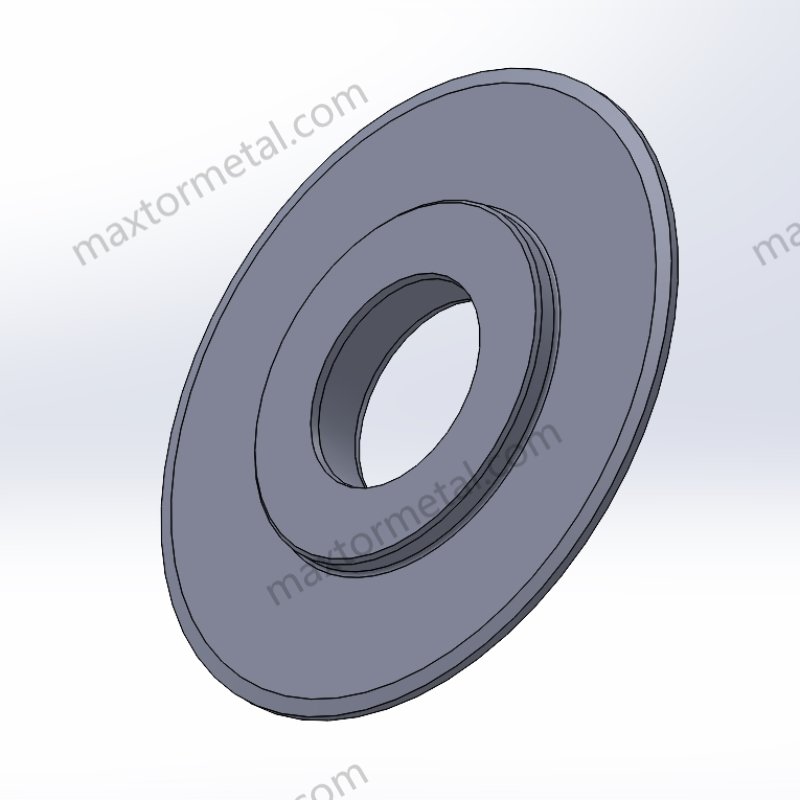
Taking care of your slitter blades helps them work better and last longer. Good care also keeps your machines working well and saves you money. Here are some easy ways to look after your rotary slitter blades.
Cleaning and Handling
Always be careful when you touch slitter blades. If you drop or hit them, the sharp edge can get ruined. Follow these steps to keep your blades safe and clean:
- Inspect Blades Regularly
Look at your blades often for chips, rough spots, or uneven wear. Write down what you find each time. This helps you see problems early and know when to fix or change a blade. - Clean After Each Use
Use soft tools and special cleaners to wipe off metal dust and dirt. Clean your blades after every job. This stops buildup and helps blades stay sharp longer. - Lubricate Properly
Pick the right oil or liquid for your job. Water-based oils are good for jobs that get hot. Oil-based ones are best for tough metal cutting. Lubrication helps blades move easier and last up to 25% longer. - Store Blades Safely
Keep blades in a dry place that does not get too hot or cold. Use covers to stop scratches and rust. - Train Operators
Make sure everyone knows how to handle blades the right way. Do not touch the sharp edge. Line up blades carefully when putting them in. Well-trained workers help blades last longer.
Tip: If you clean and handle your blades with care, they will last longer and work better.
Sharpening and Reconditioning
You do not have to buy a new blade every time it gets dull. You can sharpen or fix old blades to make them work like new. Use a grinding machine or ask a pro to sharpen your blades. Sharpen blades if you see rough cuts or if cutting gets hard.
- Sharpened blades work almost like new ones.
- Sharp blades help you cut faster and neater.
- If you sharpen blades often, you do not need to buy as many new ones.
Keeping blades sharp helps you work faster and get better cuts. You save money and your machines work better.
Monitoring Performance
You can use smart systems to watch how your blades are doing. These systems tell you when a blade is getting worn out. Companies using these systems can work 30% faster because they know when to change blades before problems happen.
Machine Condition Monitoring (MCM) uses smart tools to check for blade wear. It can even show where a problem is starting. This helps you fix things early and avoid stopping your machines.
Note: If you check your blades often and use smart tools, your blades will last longer and your machines will run better.
You can pick from many rotary slitter blades. Some types are D2 tool steel, carbide-tipped, and micro-grain tungsten carbide. Top brands like Nanjing Metal Industrial have blades for all kinds of jobs. If you match your blade to your metal and how fast you work, you get better cuts. Checking and cleaning blades often helps you find dull edges early. This keeps your blades working well and stops waste.
- Good blades cut many metals and help you work faster.
- Cleaning and storing blades safely keeps them in good shape.
| Step | Description |
|---|---|
| 1 | Talk to experts about what you need. |
| 2 | Get a blade designed for your job. |
| 3 | Try out the blade before using it a lot. |
| 4 | Make sure the blade is strong and works well. |
| 5 | Use the blade in your factory or shop. |
If you want a blade made just for you, contact a sales engineer.
FAQ
What is a rotary slitter blade for metal?
A rotary slitter blade for metal is a round cutting tool. You use it in slitting machines to cut wide metal coils into narrower strips. These blades help you get clean, straight cuts with less waste.
How do you choose the right rotary slitter blade for metal?
You should match the blade material to your metal type and thickness. Check your machine’s speed and size requirements. Ask your supplier for help if you are unsure. The right blade gives you better cuts and longer life.
How often should you replace a rotary slitter blade for metal?
You should replace the blade when you see dull edges, rough cuts, or more burrs. Heavy use or hard metals may need more frequent changes. Regular checks help you know when to switch blades.
Can you sharpen a rotary slitter blade for metal?
Yes, you can sharpen most rotary slitter blades for metal. Use a grinding machine or ask a professional. Sharpening helps you save money and keeps your cuts clean.
What metals can you cut with a rotary slitter blade for metal?
You can cut many metals, such as mild steel, stainless steel, aluminum, copper, and titanium. Pick the right blade material for each metal to get the best results.
Why does blade surface finish matter?
A smooth surface finish lowers friction and heat. This helps your rotary slitter blade for metal last longer and cut better. Special coatings can also stop rust and sticking.
How do you store rotary slitter blades for metal?
Store blades in a dry, cool place. Use blade covers or cases to prevent scratches and rust. Keep them away from moisture and chemicals for longer life.
What should you do if your rotary slitter blade for metal wears out too quickly?
Check if you use the right blade material and coating. Make sure your machine settings are correct. Clean and lubricate blades after each use. Ask your supplier for advice if problems continue.
See Also
How to Choose the Right Circular Slitter Blades for Long-Lasting Performance
The Ultimate Guide to Choosing Rubber Slitter Blade
How to Maximize Slitter Blade Sharpness for Superior Cutting Performance


